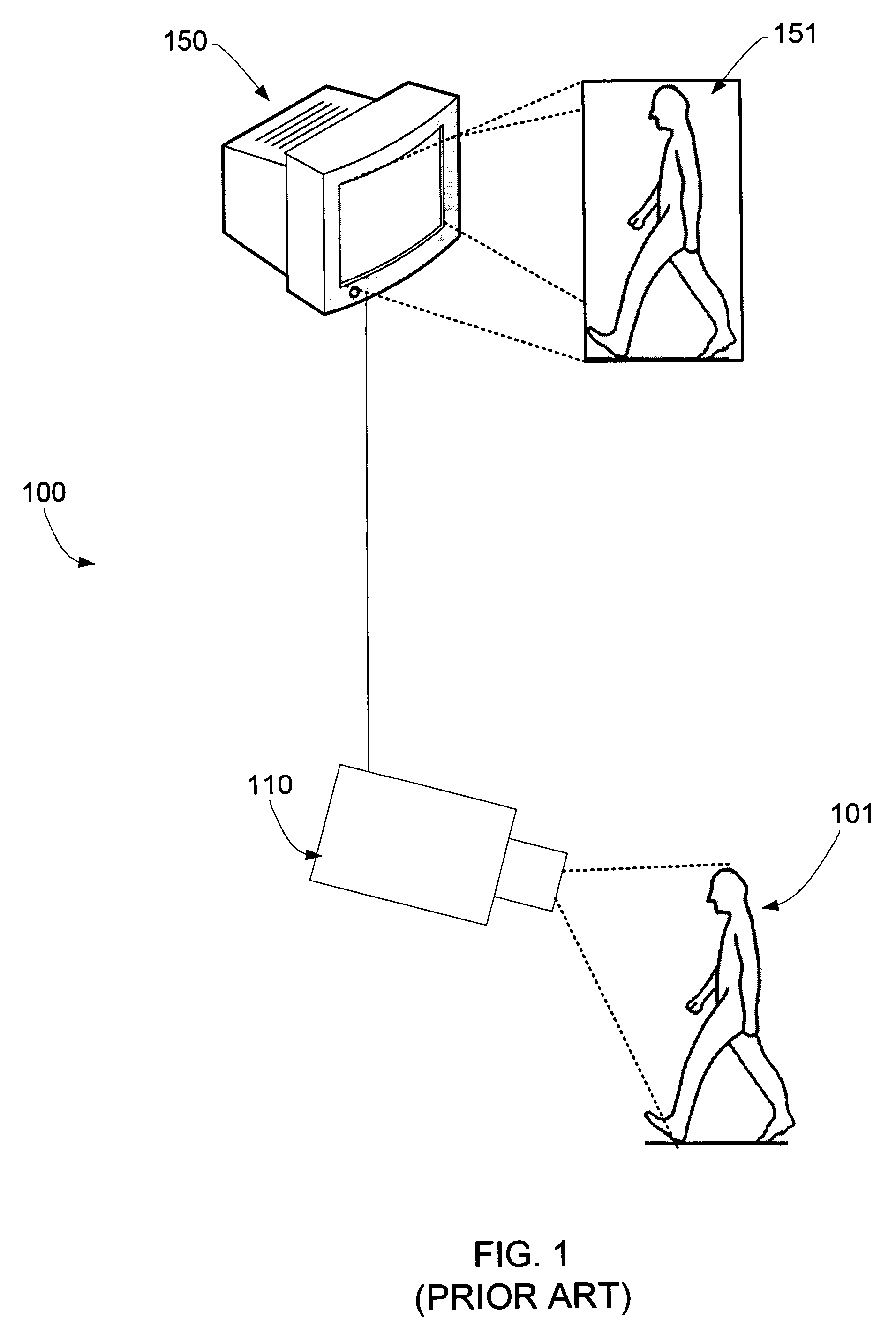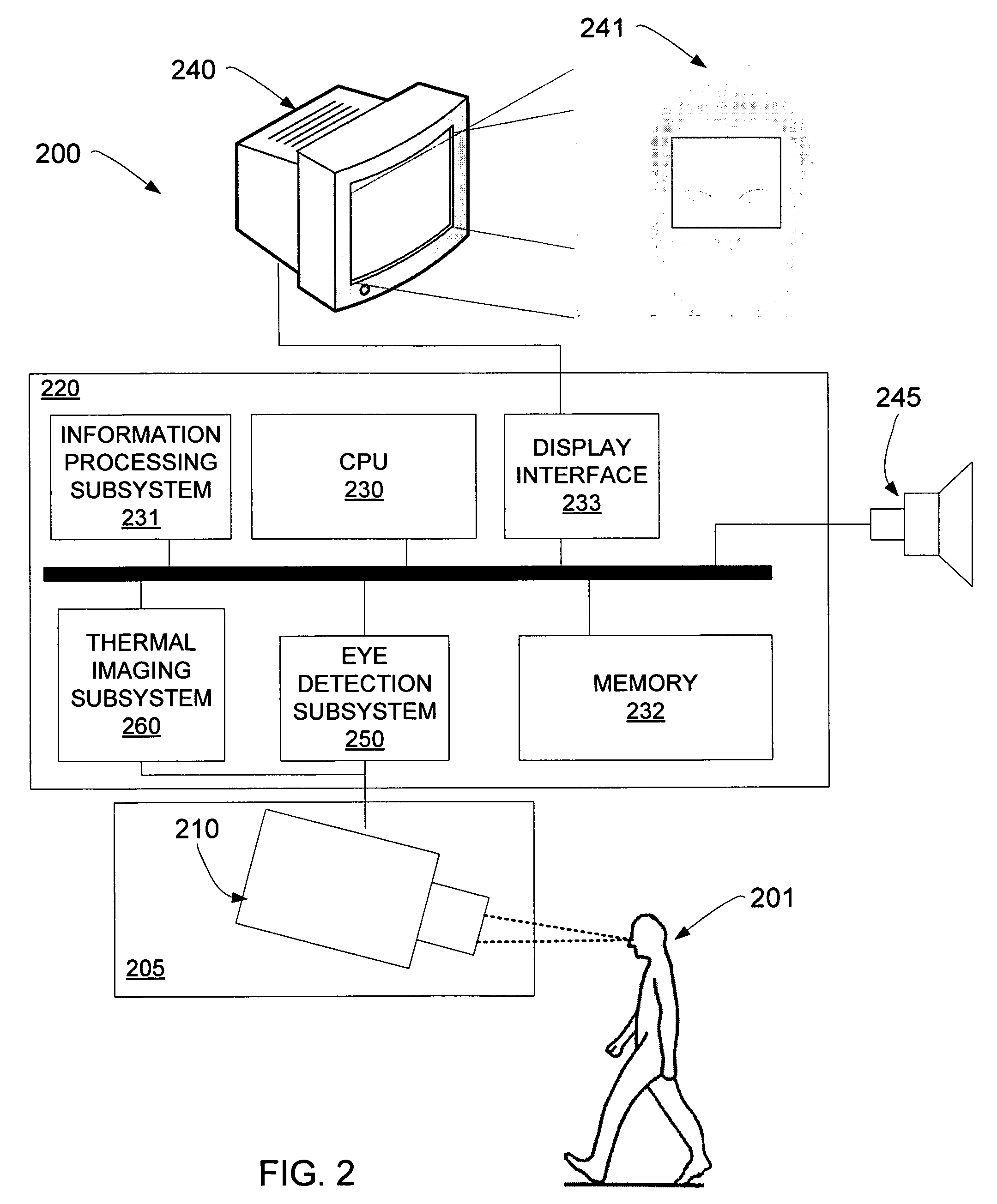System and method for detecting thermal anomalies
a technology of thermal anomalies and detection methods, applied in medical equipment, radiation pyrometry, instruments, etc., can solve the problems of difficult detection, limited accuracy of thermal imaging cameras b>110/b>, and difficulty in detecting, so as to reduce the amount of sheer data to be checked, reduce the amount of area in which thermal characteristics are analyzed, and improve the effect of computing tim
- Summary
- Abstract
- Description
- Claims
- Application Information
AI Technical Summary
Benefits of technology
Problems solved by technology
Method used
Image
Examples
Embodiment Construction
[0019]The following discussion is presented to enable a person skilled in the art to make and use the invention. The general principles described herein may be applied to embodiments and applications other than those detailed above without departing from the spirit and scope of the present invention. The present invention is not intended to be limited to the embodiments shown, but is to be accorded the widest scope consistent with the principles and features disclosed or suggested herein.
[0020]FIG. 2 is a block diagram of a thermal anomaly detection system 200 for detecting thermal anomalies, such as elevated skin temperatures in human beings, according to an embodiment of the invention. Typically, the system 200 may be used to screen human beings or livestock for thermal anomalies, such as an elevated temperature, i.e., a fever, and the like. Although the examples and figures in this disclosure typically refer to humans being screened, the system and method may be used with animals...
PUM
 Login to View More
Login to View More Abstract
Description
Claims
Application Information
 Login to View More
Login to View More - R&D
- Intellectual Property
- Life Sciences
- Materials
- Tech Scout
- Unparalleled Data Quality
- Higher Quality Content
- 60% Fewer Hallucinations
Browse by: Latest US Patents, China's latest patents, Technical Efficacy Thesaurus, Application Domain, Technology Topic, Popular Technical Reports.
© 2025 PatSnap. All rights reserved.Legal|Privacy policy|Modern Slavery Act Transparency Statement|Sitemap|About US| Contact US: help@patsnap.com



